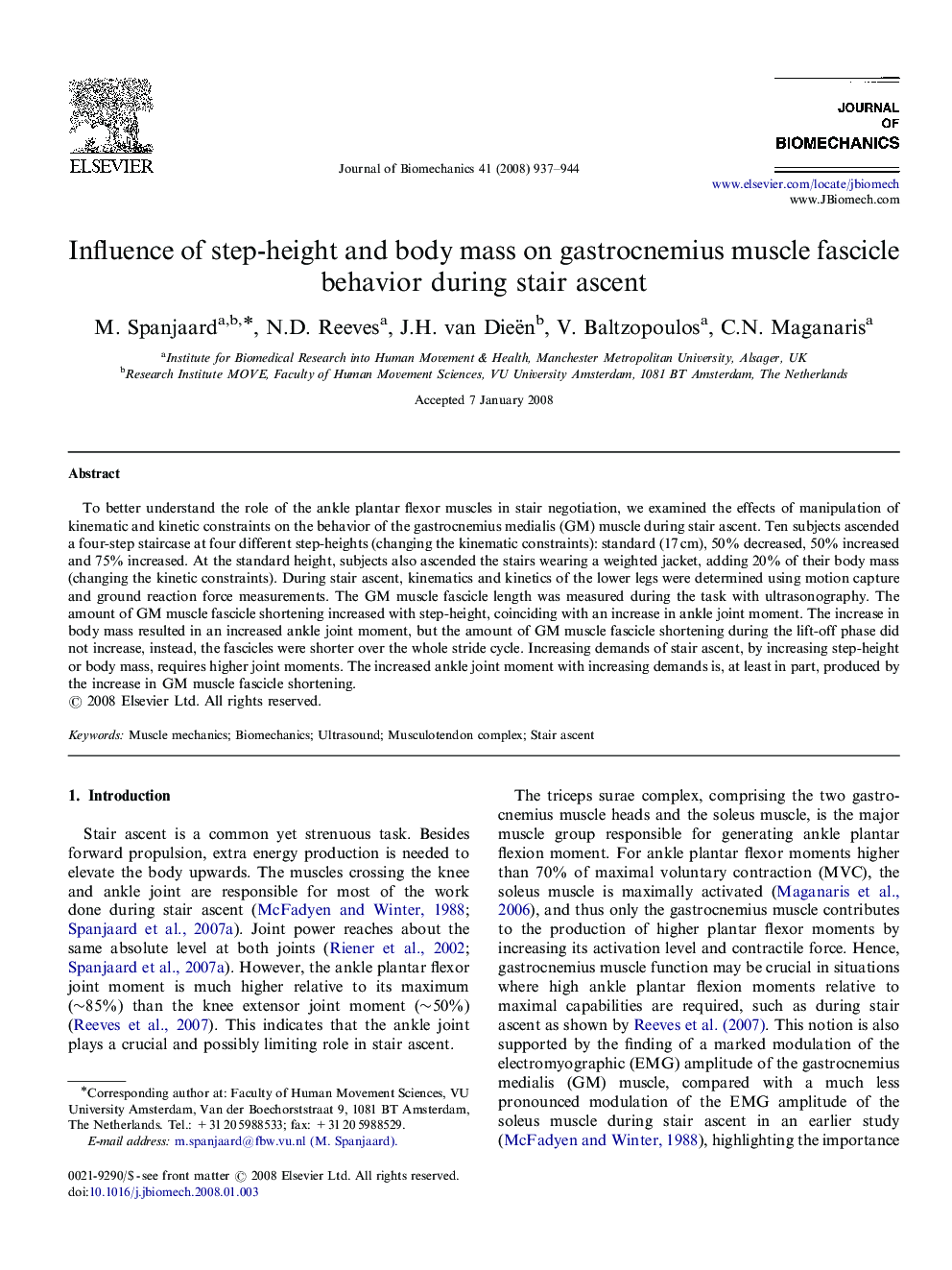| کد مقاله | کد نشریه | سال انتشار | مقاله انگلیسی | نسخه تمام متن |
|---|---|---|---|---|
| 874170 | 910328 | 2008 | 8 صفحه PDF | دانلود رایگان |

To better understand the role of the ankle plantar flexor muscles in stair negotiation, we examined the effects of manipulation of kinematic and kinetic constraints on the behavior of the gastrocnemius medialis (GM) muscle during stair ascent. Ten subjects ascended a four-step staircase at four different step-heights (changing the kinematic constraints): standard (17 cm), 50% decreased, 50% increased and 75% increased. At the standard height, subjects also ascended the stairs wearing a weighted jacket, adding 20% of their body mass (changing the kinetic constraints). During stair ascent, kinematics and kinetics of the lower legs were determined using motion capture and ground reaction force measurements. The GM muscle fascicle length was measured during the task with ultrasonography. The amount of GM muscle fascicle shortening increased with step-height, coinciding with an increase in ankle joint moment. The increase in body mass resulted in an increased ankle joint moment, but the amount of GM muscle fascicle shortening during the lift-off phase did not increase, instead, the fascicles were shorter over the whole stride cycle. Increasing demands of stair ascent, by increasing step-height or body mass, requires higher joint moments. The increased ankle joint moment with increasing demands is, at least in part, produced by the increase in GM muscle fascicle shortening.
Journal: Journal of Biomechanics - Volume 41, Issue 5, 2008, Pages 937–944